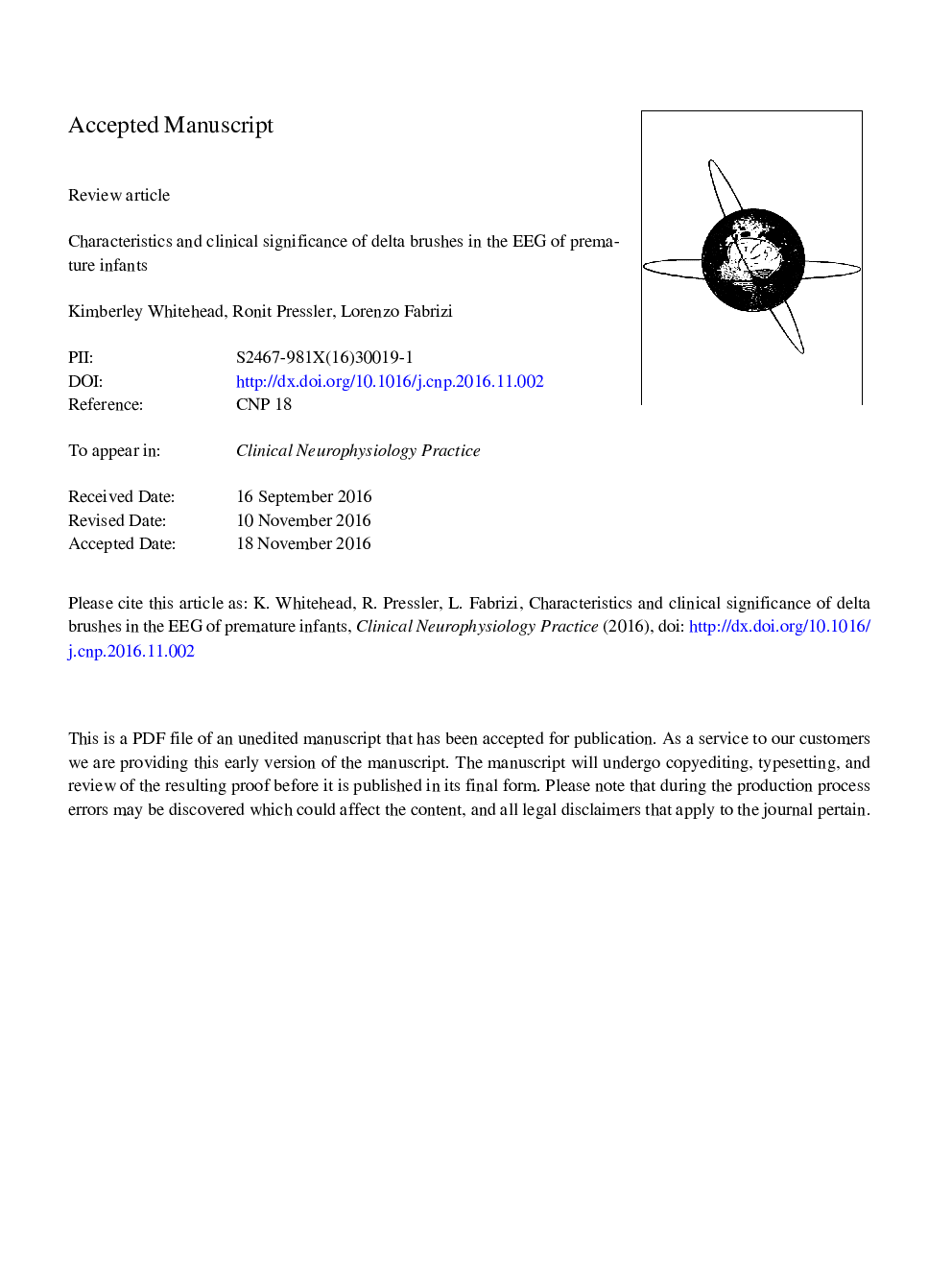| Article ID | Journal | Published Year | Pages | File Type |
|---|---|---|---|---|
| 8683327 | Clinical Neurophysiology Practice | 2017 | 21 Pages |
Abstract
Delta brushes are the hallmark of the EEG of premature infants. They are readily recognisable because of their characteristic appearance and are a key marker of neural maturation. However they are sometimes inconsistently described in the literature making identification of abnormalities challenging. The goal of this review is to provide an overview of research findings on this topic in the last five decades. Firstly, the characteristic features of delta brushes are described, including the developmental trajectory of their incidence and how they are modulated by vigilance state in normal neonates. Secondly, their clinical significance is discussed including how abnormalities in their incidence or appearance indicate particular pathophysiology. We propose that (i) the effect of age and vigilance state on the frequency, amplitude and topography of delta brushes, and (ii) heterogeneity within the cohorts of 'normal' premature infants studied, may explain the very variable descriptions of delta brush characteristics in the literature. By explicitly taking these factors into consideration to explain delta brush variability, the presented summary facilitates the clinical electrodiagnostic and prognostic use of delta brush abnormalities as a biomarker.
Keywords
Related Topics
Life Sciences
Neuroscience
Neurology
Authors
Kimberley Whitehead, Ronit Pressler, Lorenzo Fabrizi,
